Hollywood Animals
Brian McMillan, Eric Weld
Hollywood Animals is a Santa Clarita, CA exotic animal rental business which trains big cats and other exotics and then “rents them out” for special events, movies, TV, and advertising. They make the dangerous claim that their big cats are perfectly “safe” working with untrained actors and operate a bogus “Exotic Animal Training School” which promises to turn paying members of the public into animal trainers in just two weeks via reportedly illegal and extremely dangerous hands-on interactions with their adult big cats and bears.
Hollywood Animals was founded in 1984 by Ringling Bros. lion trainer Brian McMillan and is currently owned and operated by Eric and Bettina Weld. They have operated under multiple names, including “Animal Rentals Unlimited, Inc” and “Brian McMillan’s Animal Rentals.” Their USDA license has also covered McMillan and Weld’s fairground shows “Walking With Lions” and “Brian McMillan’s Wild World of Tigers.” McMillan has boasted that one of his lions “could bring in $2,500 per day for filming, while the rare white lion could fetch $10,000 per day.”
Hollywood Animals has been written up by federal inspectors for failure to maintain records on euthanized/transferred big cats, failure to provide animals with potable water, withholding food from animals, and endangering the public by selling hands-on animal encounters with large carnivores in direct defiance of multiple USDA orders. They have also had at least two animals escape from their facility.
Brian McMillan
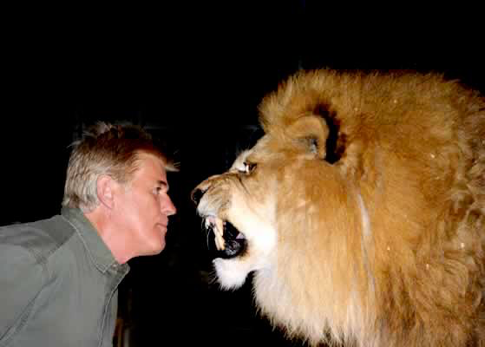
Brian McMillan comes from a family of circus animal trainers. According to his personal website:
“Brian McMillan started his career by apprenticing to numerous circus animal trainers in Europe. He worked for Ringling Brothers Barnum and Bailey Circus as an animal trainer under the renowned animal trainer Gunther Gebel-Williams. A few years later [he] was recruited by Africa USA and began working in the film industry as an exotic animal trainer. He worked for Resorts International and was the youngest director of Animal shows at Marine World Africa USA where he performed and trained all the animals for the shows, and supervised their care. He continued his career as an animal trainer, coordinator for live entertainment and for the film industry worldwide from North America, India, Australia to Africa. He transported hundred of exotics animals by air and sea as well as setting up facilities while on location.”
Both Ringling Bros. and Marine World Africa USA have appalling records of animal abuse, and McMillan’s mentor, Gunther Gebel-Williams, has been caught whipping animals in the face, striking elephants with bullhooks, and as director of Animal Welfare for Ringling Bros., ignoring veterinary advice by forcing extremely sick animals to perform until they died (and then covering up the deaths).
McMillan himself was a lion trainer for Ringling Bros. starting in 1970. His group of 7 lionesses and one male lion were forced to jump through flaming hoops, stand on their hind legs, play “leapfrog,” and dance. McMillan toured with his group of performing lions in Ringling’s Gold Unit in 2010.
Videos of his performances with Ringling show stressed lionesses being whipped and poked with pointed sticks as they swatted and snarled at him with ears pinned back and
a panicked lioness frantically trying to escape a tiny cage while being used as a prop in a noisy magic act.
After the show, all 7 lionesses were crammed into a tiny transport cage where they were seen pacing in tight circles.
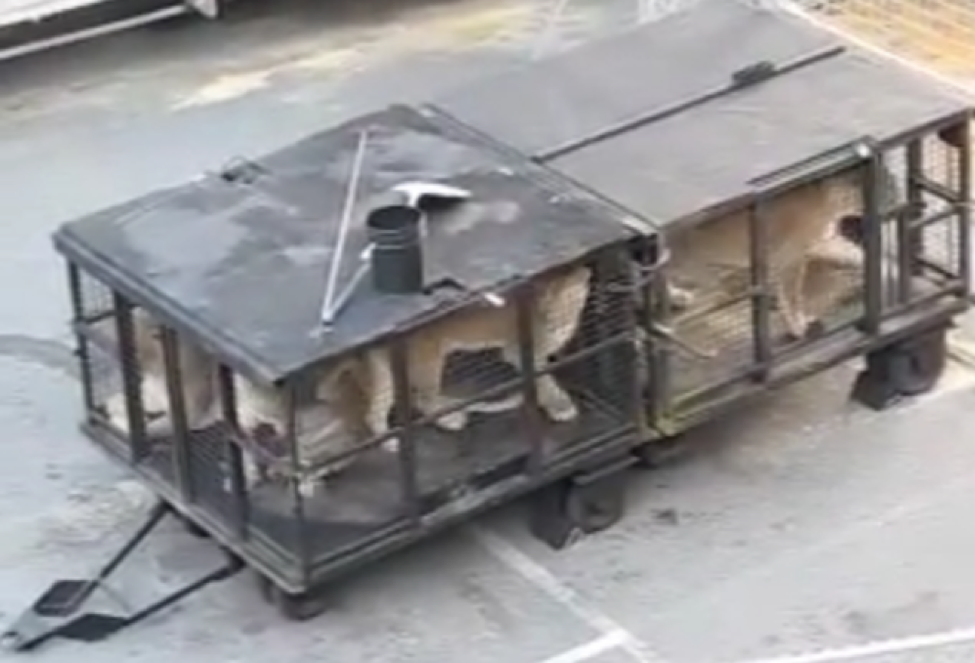
McMillan’s 7 lionesses pacing in their tiny transport crate after a 2010 Ringling show.
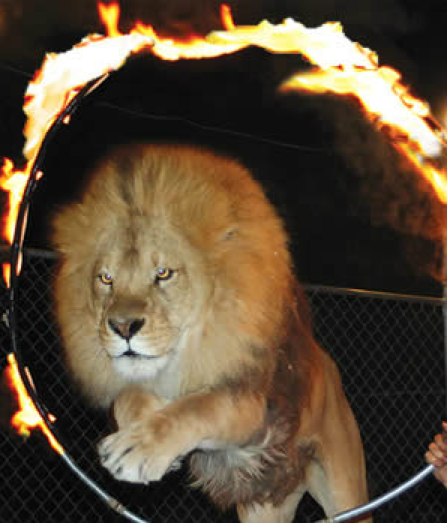
McMillan’s lion jumping through a flaming hoop at a circus.
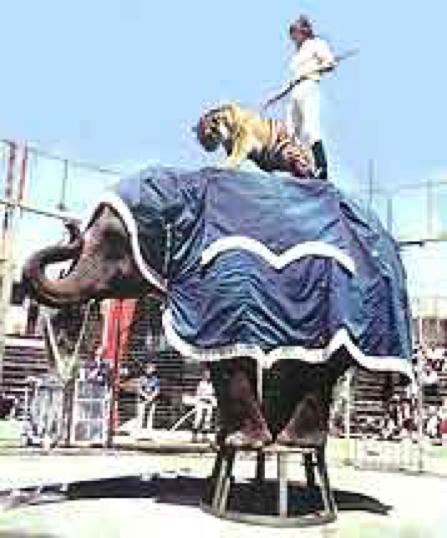
One of McMillan’s animal acts at Marine World Africa USA.
Brian McMillan appears to have a cavalier attitude about the danger his big cats pose to himself and others, as evidenced by his willingness to let members of the public interact with his tigers and his reassurances that the cats are “perfectly safe” to use in full-contact scenes with untrained actors. Like so many private owners, he claims that his animals would never hurt anyone because of the “bond” he feels he has with them. This article describes him “playing around with an [adult] white lion named “Lufuno,” pulling on his tail and limbs as the lion playfully bats at him with his huge paws. McMillan said he doesn’t fear being attacked, because of the relationship they have. “We’re like brothers.” McMillan said.” With this attitude, the fact that Hollywood Animals hasn’t had a serious incident speaks more to luck than to “safety.”
This video, uploaded by McMillan to promote Lufuno, reveals that the lion was purchased as a cub from a park in South Africa (which probably told tourists that they were “conserving lions.”) It includes footage of McMillan holding a whip and a wooden rod while working with Lufuno, and an inexplicable scene of one of McMillan’s associates riding on the lion’s back, which can’t possibly be good for the cat’s spine.
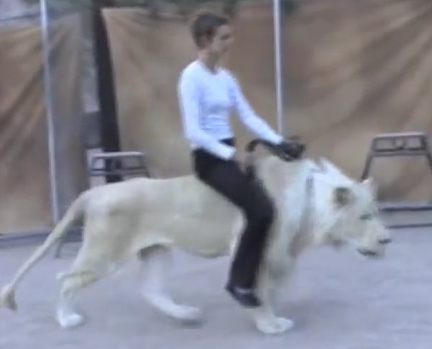
In 2013, after leaving Hollywood Animals in the hands of Eric Weld, McMillan moved his lions to a suburban Southern Oregon property, within a 1 mile radius of approximately 5,000 homes and 4 schools, including an elementary school. He intended to continue renting them out for film work and opened a bed and breakfast called “Walking With Lions,” where guests could view and feed the lions through the chainlink fence. But because the property was not zoned for “commercial use” of exotic animals, McMillan was forced to move back to California in 2015.
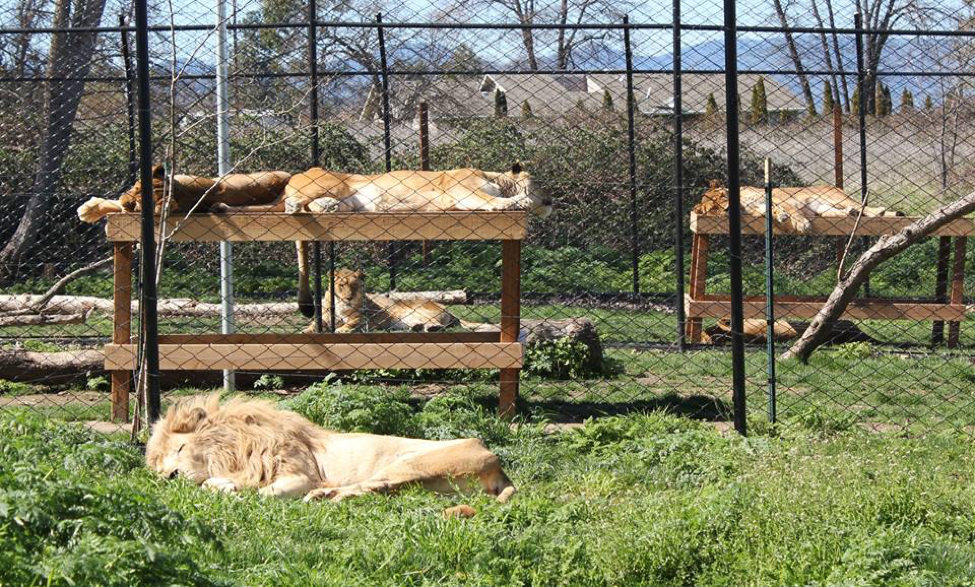
McMillan’s former “Walking with Lions” facility in suburban Oregon. Note the houses in the background.
Eric Weld
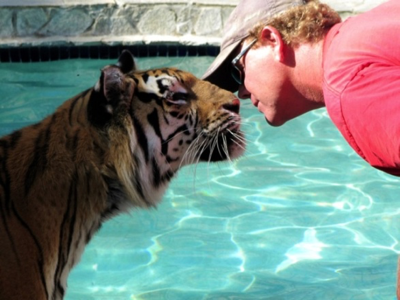
Eric Weld originally worked in advertising. One day, he visited a set where McMillan was working with big cats and decided to become an animal trainer himself. He joined Hollywood Animals as an intern in 2001, became a partner in 2004, and eventually gained full ownership of the company. Weld currently owns and trains all of the animals at Hollywood Animals. Weld has spoken up in support of the “right” for private owners to house tigers in residential areas. He also opposes a proposed Los Angeles law which would ban all exotic animal performances/displays (with the exception of AZA zoos and filming) within city limits because it would prevent Hollywood Animals from providing “education through sight” by renting out caged big cats as party props. The planned law was introduced by city councilman David Ryu, who is disturbed by the trend of Hollywood Hills house parties using caged lions and tigers as display pieces. “Treating animals in this manner has taught generations of people that it’s okay to view these wild and exotic animals at toys,” said Ryu. “And I felt that Los Angeles must take an action to make clear that exhibiting animals in this way was no longer in line with our city’s values.”
Animal Welfare/Public Safety Issues
Hollywood Animals claims to use the nice-sounding “affection training” to train their big cats.
But this video uploaded by Brian McMillan reveals that “affection training” means ripping newborn cubs from their mothers and bottle raising them in a home so the cubs are forced to “bond” to trainers instead. Eric Weld has continued this practice and has confirmed that cubs are usually purchased from private breeders. McMillan and Weld claim that the unnatural imprinting process creates “a close relationship based on trust and respect,” and that it allows his adult big cats to have full contact with untrained cast and crew “with complete safety,” a dangerous lie.
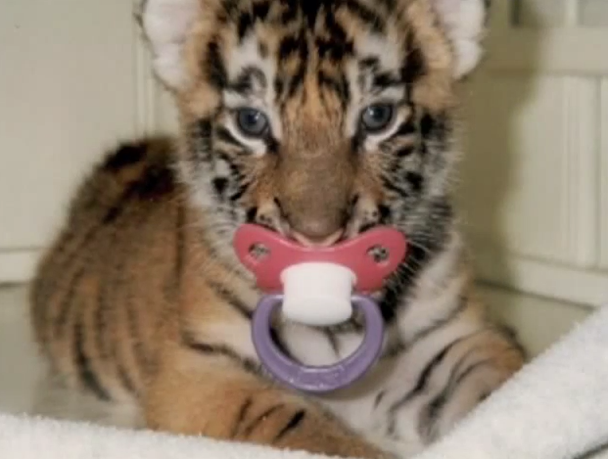
A baby pacifier is a cruel replacement for this cross-eyed cub’s mother. Photo from McMillan’s Youtube channel.
Although Hollywood Animals advertises “humanely trained animals,” videos taken at their compound routinely show McMillan and Weld training and “working” the big cats with whips, rods, and pointed sticks in hand, just like during McMillan’s circus days.
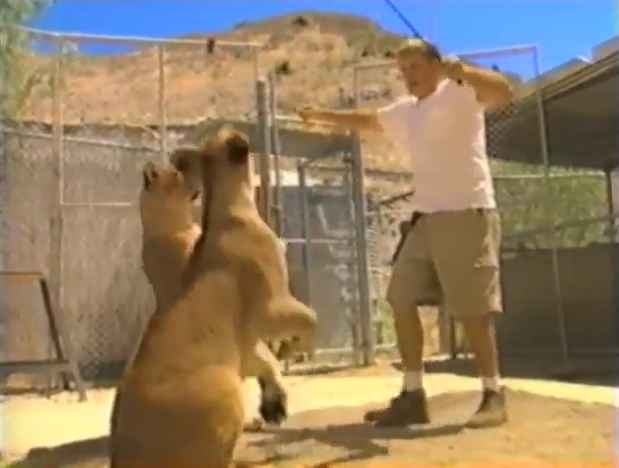
McMillan at Hollywood Animals, training lions to stand on their hind legs by waving a whip over their heads.
USDA Reports:
PETA has archived all of Hollywood Animals’ USDA inspection reports from 1994-2015. Here are some particularly notable citations:
September 2000:
- “Records indicate that a juvenile lion died on 8-4-00. There are no records indicating any veterinary problems or disease indications prior to death. Licensee stated animal was euthanized, but no reasons were documented orally or in writing.”
- “Lion Romeo is no longer at facility. There are no records indicating disposition of animal.”
Note: This is not the same “Romeo” that was beaten by Sid Yost, another Hollywood trainer.
July 2001:
- “Interior portion of [lion] enclosures consists of chain link caging, in a barn room. This caging is fastened to the wall only by “plumbers tape” (metal strapping attached by screws). This is not structurally adequate for full size lions.”
October 2002:
- “Lion Rafiki shows general lameness when moving, as well as a reluctance to move. Some records are available regarding this condition, but they are not complete. There is no veterinary evaluation of the animals current condition, including a prognosis or treatment plan, if any.”
- “Note board in upper compound had a note stating that food was to be withheld on 10-23-02 from a specific animal, as it was working the next day, 10-24-02. Such deprivation of the entire diet for a day does not meet the handling requirement.”
(Note: in a later inspection, an employee claimed that this wasn’t for training and that they simply shifted the animal’s “fast day” so that it wouldn’t conflict with its working day.)
- “Enclosure housing 4 tiger cubs has one shelter box. This box would barely accommodate all 4 cubs, and any incompatibility could result in an animal without shelter from cold.”
- “Water available to animals was cloudy and did not appear potable. Employee stated water is changed every other day. This schedule does not appear adequate to ensure animals have access to potable water as required.”
August 2005:
- An inspector visiting Hollywood Animals’ compound found the gate to the perimeter fence left open and no employees present. She wrote: “Unauthorized persons could clearly have had contact with dangerous animals in the facility. Failure to use the perimeter gates when the facility is unattended could result in injury to the animals or unauthorized persons.”
March 2008:
- Tiger enclosure pool water was green, semi-opaque, and the bottom of the pool could not be seen through the water.”
- “This facility allows animals to interact with the public in several ways. Included is the opportunity to be a “trainer for a day” and/or to have a photograph taken with a leashed animal, including the large felids. These activities do not meet the standard of “sufficient distance and/or barriers between the animal and the general viewing public.” Leashes do not constitute a barrier.”
Note: The USDA demanded that Hollywood Animals immediately stop selling photos with their big cats, but this same citation was repeated in March 2009 with no consequences. The USDA declared this problem “corrected” in a May 2009 inspection report, but Hollywood Animals continued to promote their “trainer for a day” encounters, including encounters for children as young as 8, on their website until at least 2011. There is convincing evidence that Hollywood Animals still sells dangerous “animal encounters” to this day — a 2016 episode of “Hell’s Kitchen” featured the show’s contestants petting and feeding an adult tiger while taking part in a Hollywood Animals “training class,” a 2016 episode of the Nickelodeon program “Jagger Eaton’s Mega Life” featured their 16 year old host “training” a 700 lb. grizzly bear at the compound, and the link advertising Hollywood Animals’ “Animal School” remains on the company website.
Other Issues:
A “behind the scenes” site for a Bollywood film that used Hollywood Animals’ tigers reported that one of the cats had to be exposed to blasting loud rock music “or she wouldn’t perform.” This site also includes pictures of Weld carrying a bamboo rod while working with the tiger on-set.
In 2012, students of Loyola Marymount University were shocked to find a live male lion sweltering in a small cage in the middle of their campus on an 80 degree day. The lion, a 13-year-old male named “Felix,” was hired from Hollywood Animals by a student group as a “special surprise” to represent their university mascot. According to this article, “Weld bought Felix from a breeder in Minnesota when he was 3 months old and trained him like a dog to wear clothes, and work with other animals and people. He has worked in feature films such as Evan Almighty, We Bought A Zoo, and in a Chase Bank Commercial that is currently airing.” Although many students were disgusted by the stunt, the people who rented the lion claimed that because Felix is a “movie lion” and not from a zoo, “he’s used to this kind of stuff.”
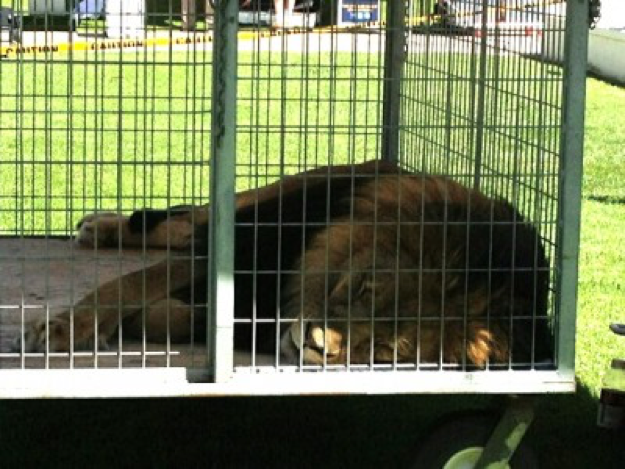
Felix sweltering in a cage at LMU.
Here are several videos of Felix being used as an ego prop in the yard of a mansion for a DJ Khaled rap album. For a brief moment in one of them, you can see Weld lunging towards Felix (“contained” by a thin electric fence) with a pointed metal stick.
Here’s a video, uploaded by McMillan himself, of Felix being taken out of his cage by handlers wielding sticks before being dressed up in a demeaning, clown-like party hat, bowtie, and bib for a commercial shoot.
In the mid to late 1990s, several wallaroos escaped Hollywood Animals’ compound, confusing local residents. This article also mentions that although Hollywood Animals is “not technically open to the public they have seminars, private parties, corporate events, and animal training courses and classes. According to their website, the seminars cost $100 per person or $190 per couple and last for about 4 hours. You would be in a group of about 20 to 30 people and get a behind the scene look at the animals.” This is likely a reference to the bogus “animal training seminars” where McMillan allows the general public to pay big bucks for the (illegal) opportunity to pet and pose with his adult big cats and bears, despite repeated USDA orders not to do so.
In this 2011 article, a journalist who visited Hollywood Animals took part in their 16-and-up “trainer for a day” program, overseen by Eric Weld in direct defiance of two USDA orders to cease public contact with dangerous carnivores. In a shocking disregard for public safety, Weld allowed the journalist to enter the enclosure of an unrestrained 350 lb. tiger and give “sit and stay” commands to the cat, before having him feed a 600 lb. grizzly bear named Bam Bam marshmallows and gummy bears out of his mouth (Weld warned “if you pull away at the last second, Bam Bam will claw at the marshmallow — and your mouth”).
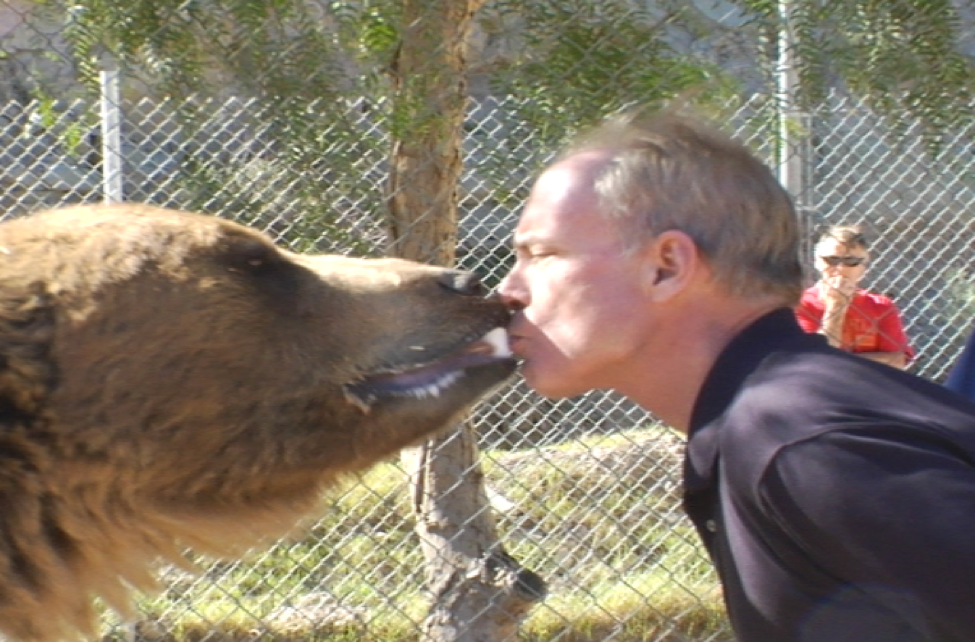
An untrained journalist “kisses” a grizzly bear at Eric Weld’s compound. Does this look like a good idea?
In 2009, Hollywood Animals applied for US Fish and Wildlife Service permits to travel overseas with 2 leopards for the purported purpose of “enhancement of the species through conservation education.” The real purpose, of course, was movie filming.
In 1994, Hollywood Animals sold 5 leopards and a tiger to the Animal Actors Agency in London, which billed itself as “Europe’s leading supplier of animals to the television and film industries.”
Fairground exhibits
Around 2007, Brian McMillan loaded eight lions (7 females and 1 male) into a 33 foot long stainless steel travel trailer and took them on the fairground circuit with his “Walking with Lions” show. The show, which is now defunct, dragged the lions across North America to 10-12 performances per season, some as far away as Winnepeg and Hawaii. It was essentially McMillan’s circus act with a thin veneer of “educational” content used to justify the unnatural tricks the cats were being forced to do. The lions jumped through hoops to “demonstrate their agility” and showed “an example of teamwork” by all standing on their hind legs simultaneously as McMillan snapped a whip over their heads. When not performing, the lions were housed in a 48 foot long “display trailer” to be gawked at by fairgoers. According to the official website of the show, McMillan charged over $10,000 to each fair that hosted his lions.
One of the stated purposes of “Walking with Lions” was to show off “interaction between man and lion and the personal relationship the trainers have with each lion.”
In this video of a fairground performance, we see a trainer frequently hugging the adult male lion (when not prodding the cat with a stick to force him to stand on platforms in the noisy arena). Although this show was promoted to fairs as “educational,” the only thing it taught people is that lions, which are threatened in the wild, are nothing more than harmless pets that exist for our entertainment. In the previous video, we overhear audience members saying, “He’s friendly!” as they watched the trainer hug a lion, and children interviewed after the performance explained that the lion “looks so lovable” and that the show “was more fun than a zoo” because “here they were doing tricks, and at the zoo they were just lying down.”
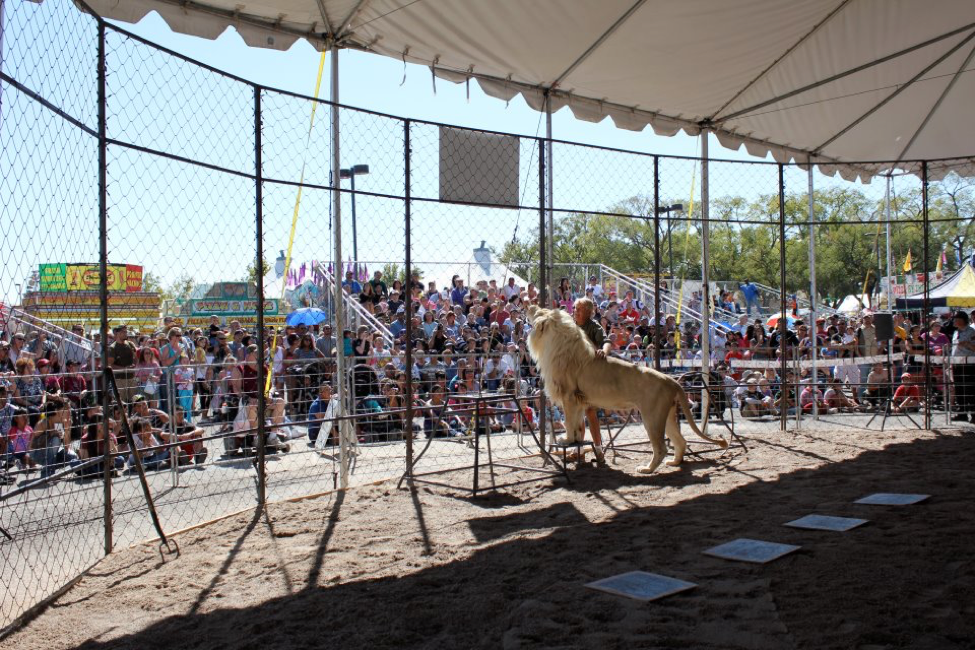
Lufuno, McMillan’s prized white lion, during a fairground performance.
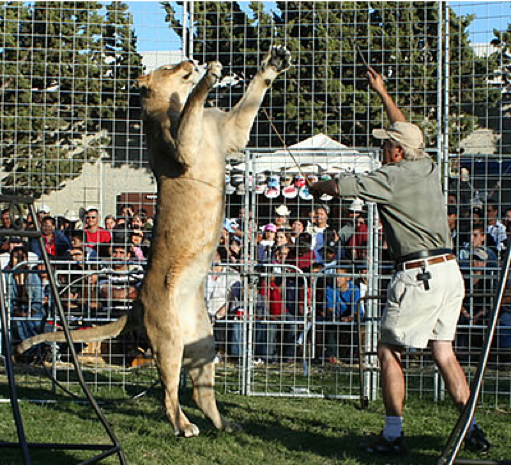
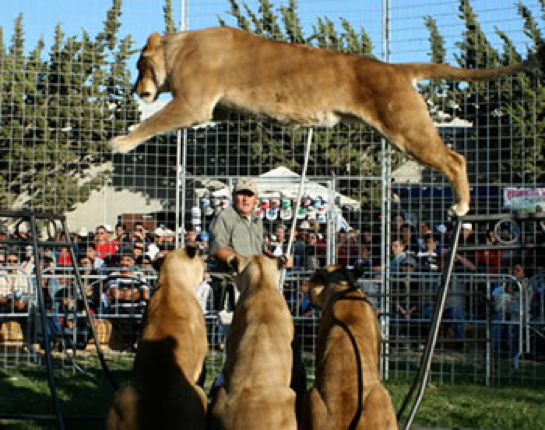
Lionesses were made to “dance” and jump on platforms to “demonstrate the lion’s agility.”
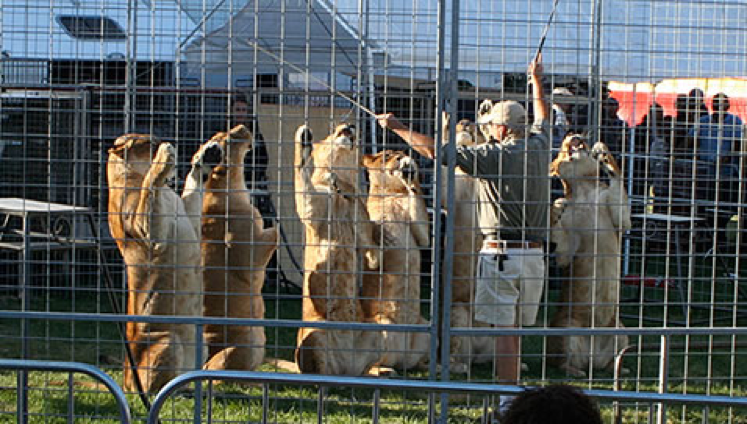
This trick was explained as “a demonstration of lioness teamwork.”
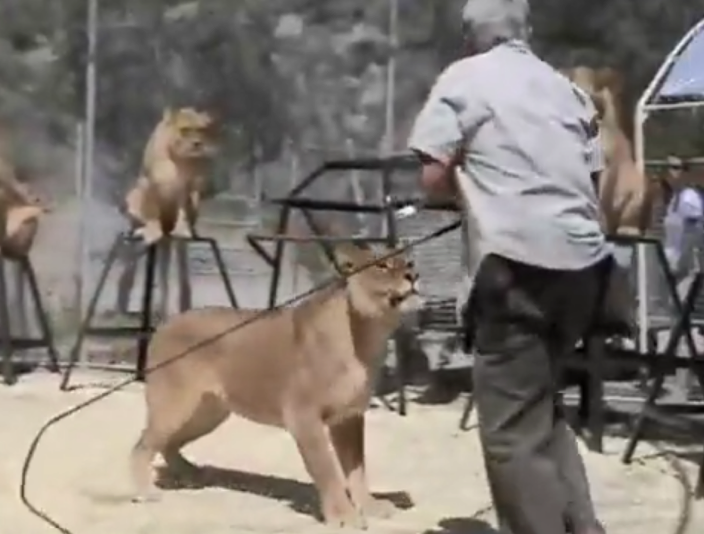
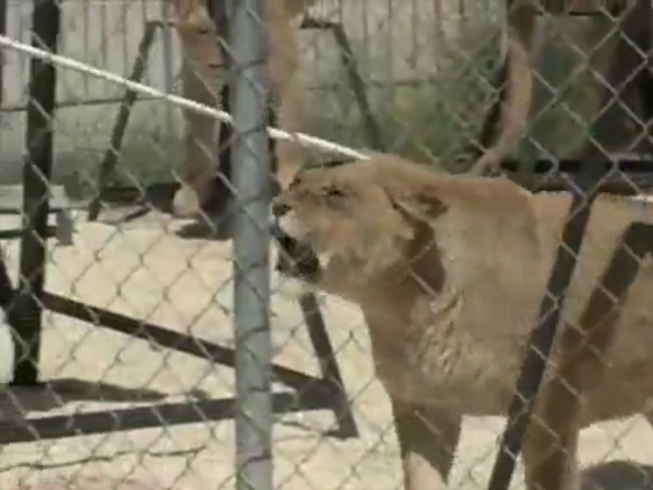
Unhappy lionesses refusing to perform are nudged with pointed sticks and cracking whips, as shown in a promotional video for the show. Ironically, McMillan’s voiceover during this footage explains how his lions “love to perform.”
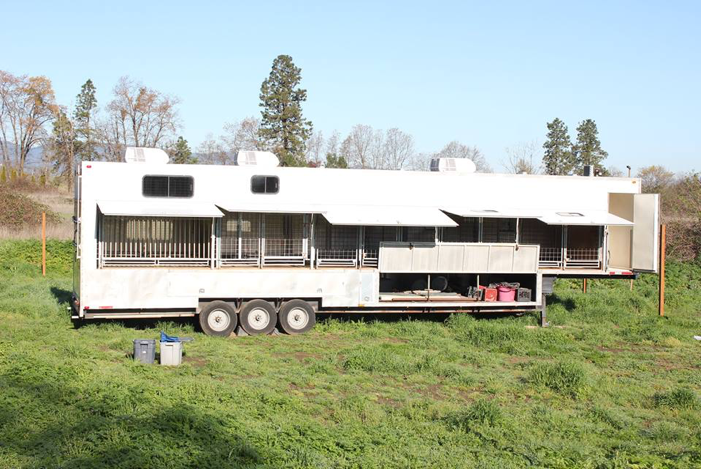
The 33 foot long trailer used by Brian McMillan to haul 8 lions to fairs as far away as Hawaii and Winnipeg.
In 2008, McMillan and Weld created a similar traveling act which included tigers, called “Brian McMillan’s Wild World of Tigers.” It does not seem to have lasted very long and only appeared at a handful of CA fairs. Like “Walking with Lions,” the purpose of this 3 performance a day “educational” show was to “show the relationship between us and the tigers.” So, naturally, Weld admits that during the show’s question-and-answer period, ““The most frequent [question] is, ‘Can I pet them?'”
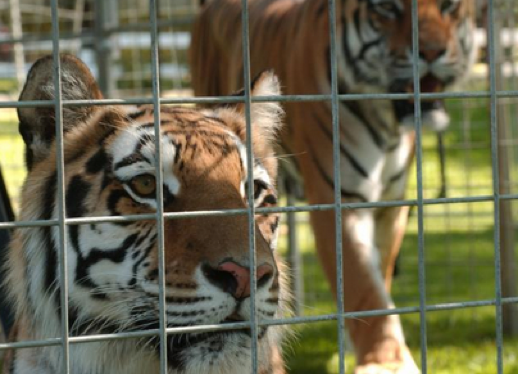
Caged tigers at the 2008 Gold Country Fair.
Photos
Ads:
Hollywood Animals’ cats are routinely portrayed by directors and advertisers as luxury “pets” or props. Not only is this exploitative and disrespectful to the animal, it also promotes the private ownership of big cats and has been scientifically proven to decrease concern for endangered species conservation by distorting the public’s perception of wildlife (see this Harvard study and this scientific journal article). Below are just a few of the ads in Hollywood Animals’ portfolio:

A chained black leopard posing with a model for a Harpers Bazaar photoshoot in 2013.
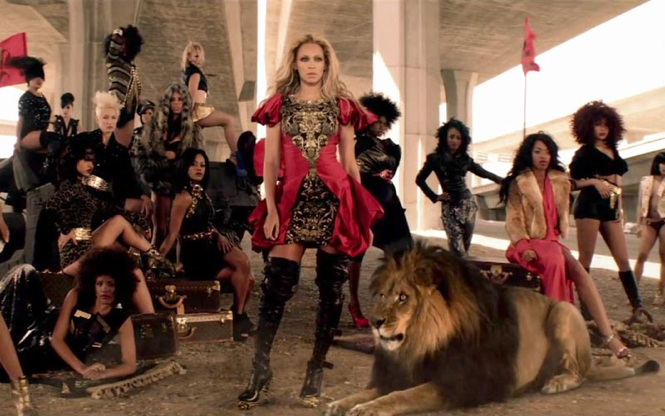
This live lion (probably Felix) was used as a prop in a Beyonce music video.
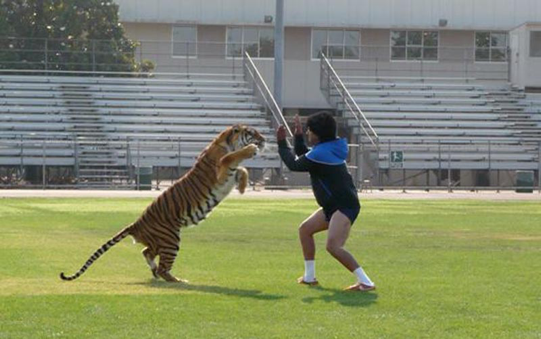
One of Hollywood Animals’ tigers in a Nike ad.
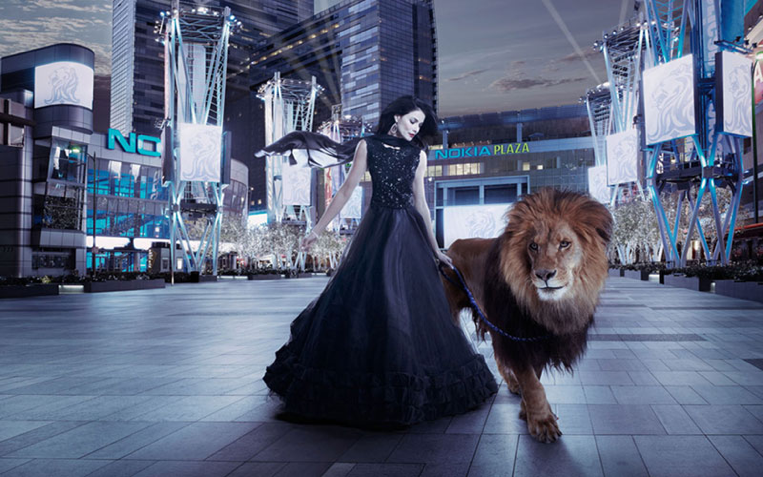
Felix again, being treated as a pet in an ad for Ritz-Carlton.
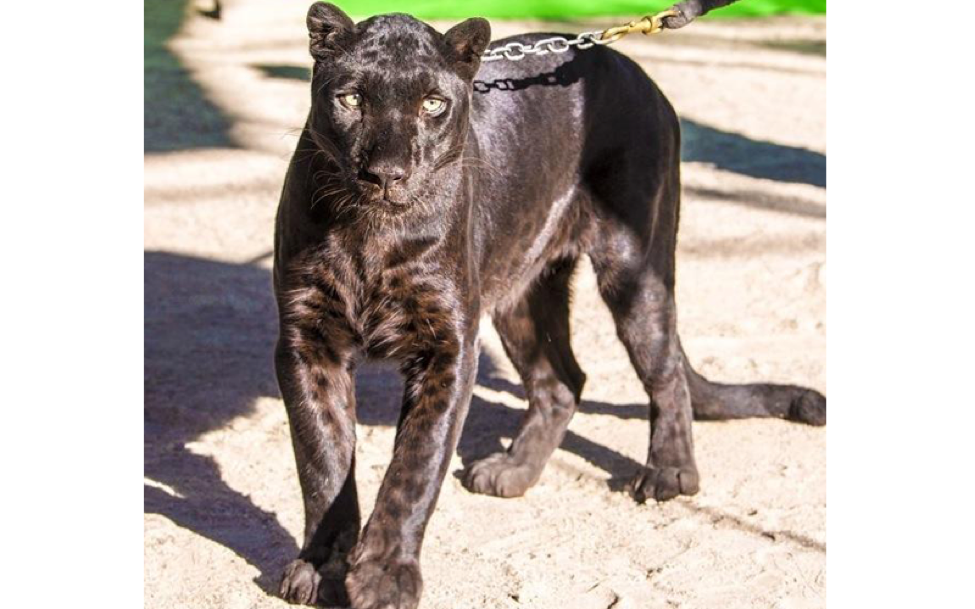
“Nikki,” a black leopard, on set.
Facility:
Hollywood Animals is based from a rural 8-acre compound in Tick Canyon, Santa Clarita, CA. If these pictures from McMillan’s website and videos are anything to go by, the cats live in fairly barren chain-link enclosures devoid of vegetation.
In this video, you can see leopards pacing in rows of small concrete-floored pens.
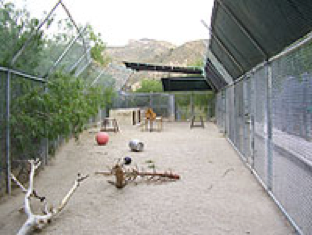
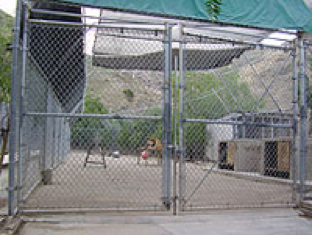
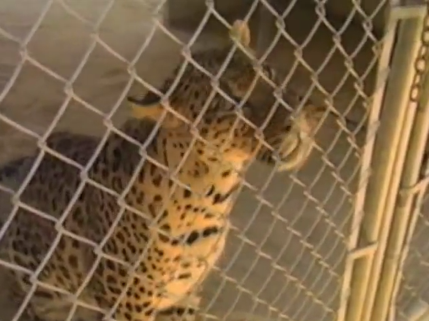
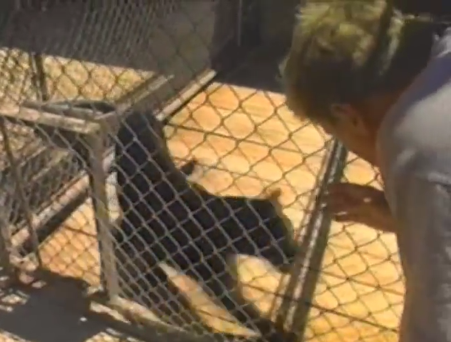
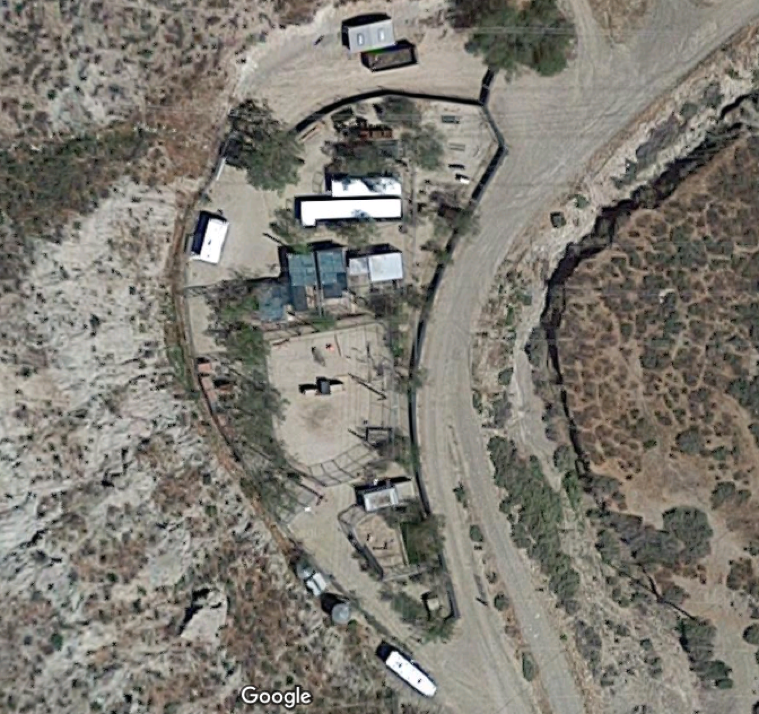
An overhead view of Hollywood Animals. Is that a tiger to the left of the red ball in the center pen?
Animal Encounters:
Photos of the public being put at risk by Hollywood Animals’ illegal “trainer for a day” programs, “private animal encounters,” and bogus “seminars,” taken from their archived promotional website. Program participants, some as young as 12 years old, have paid McMillan and Weld anywhere from hundreds to thousands of dollars for the dangerous privilege of patting and “working with” their large carnivores, despite having had no previous training or experience whatsoever. The experience was advertised as an “animal lover’s dream” and participants were urged to “bring your kids.” Some of these photos were taken as recently as 2007, and Weld mentioned in a 2009 article that “about one to four people a month pay the $600 for a personal animal encounter, usually with bears or tigers.” Profit, not safety, is clearly the motive here, and despite USDA orders to stop endangering the public in this manner, there is evidence that these dangerous encounters are still being sold by Weld “under the table”. What company would want to work with a business that has such clear disregard for human safety?
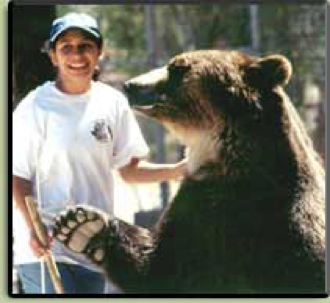
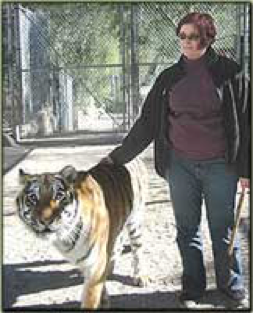
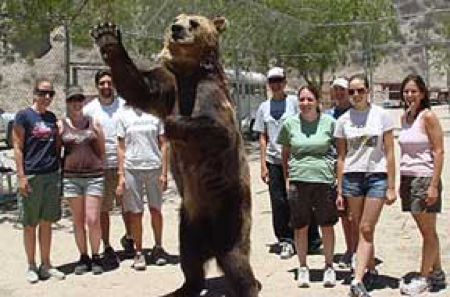
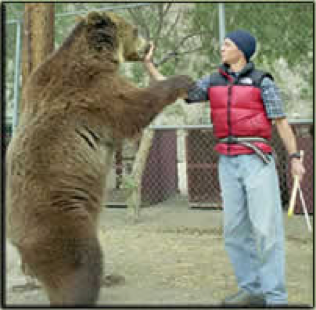
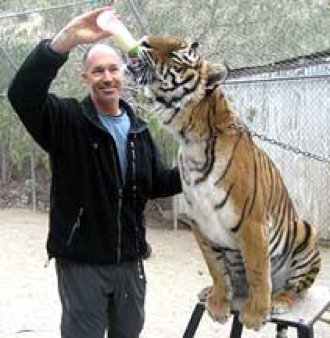
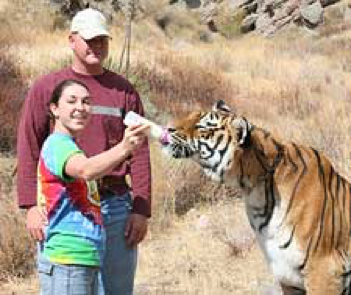
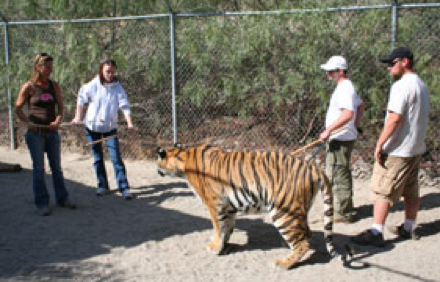
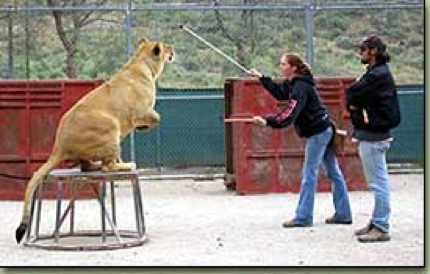
Also goes by the name Brian McMillan and tours under the name Walking With Lions at fairs.
2015 Update: Brian and Vikki McMillan packed up their lions and moved back to California after being denied permits to continue using the lions for commercial gain in Oregon. The news article did not say where the lions were going. Maybe back to the P.O. Box?
Hollywood Animals, Inc USDA # 93-C-0988
P.O. Box 2088 (really? you keep lions and tigers in a P.O. Box?)
Santa Clarita, CA 91386
Tel: 323-665-9500 Fax: 661-252-4509
Cell: 213-842-2170
2014 address:
1902 Houston Road Phoenix, OR where Brian McMillan has requested that the Jackson County Development Services interpret his breeding and commercialization of wild animals to be permitted under “farm use.” The application says he plans to bring 7 lions and assorted other wild animals from Canyon County, CA to Jackson County, OR. This 41 ac site borders or is within a 1 mile radius of 5,000 approximately residences, businesses and 4 schools.
According to those who live in the area, the real disgrace is that none of the schools, library, the police, the sheriff’s department, fire chief, retailers nor residents were informed that a wild animal attraction was opening in their neighborhood. It has been suggested that the Jackson County Development Services may have tried to block McMillan from bringing the lions under the “farm use” loophole, but that McMillan is stating that USDA gives him the right to have them; so no one can stop him.
This is a common ploy used by those who own exotic cats to circumvent local prohibitions on big cats as pets. A one page application and $40.00 can get them a USDA license, which makes them “an exhibitor” or a “breeder” thus circumventing laws that prevent their “pets.” In 2010 the Office of the Inspector General audited USDA and found that of the licensees, who held four or fewer big cats, 70% were just pet owners who obtained this easy-to-get license in order to get around local bans. This is why we need a federal ban on the private possession of big cats.
Hard to believe anyone could think there would be anything good or redeeming about a place that rents out lions, tigers or any other wild animal.
2008 USDA Violations Cited for unsafe handling of the animals and putting the public in danger. Cited for unsafe perimeter fence. Cited for unsanitary feeding and watering of the big cats.
2009 USDA Violations Cited for unsafe handling of the animals and putting the public in danger. Cited for unsafe perimeter fence. Cited for unsanitary feeding and watering of the big cats.
2011 USDA Violations Cited for unsafe cages and a faulty perimeter fence.
2015 USDA Violations Cited for unsafe cages and a faulty perimeter fence. At the time of this inspection there were 5 tigers, 2 lions and 2 leopards.
Nov 13, 2013 PHOENIX, Ore. — Giraffes, zebras, and even some lions, are moving in next door to a Phoenix neighborhood. The owner says the animals will bring big business to the Southern Oregon town, but others have concerns about how close the animals are to people.
A Hollywood animal trainer says he wants to bring the operation to Southern Oregon because he loves the land and loves the climate. The 41 acre property sits near homes, schools and businesses, and Oregon laws about exotic species allow them to be there.
North Houston Road is like many areas in Phoenix, home to scattered neighborhoods, farms, and businesses. Coming next year, that area gets some wild new tenants. Hollywood animal trainer Brian McMillan is moving his operation from Southern California to Phoenix, where he will raise and train several exotic animals, and put on educational programs.
“We will have programs here where we can have school kids in, and also members of the public who are interested in learning about game farming,” says McMillan.
He plans to bring those hoofed animals, and is trying to get approval for seven lions. That came as a surprise to some of its neighbors, including Phoenix High School, which is right next door. Principal Jani Hale says she’s neutral about having the animals next door, but she does worry about loud noises from football games startling the animals.
“That’s the first thing I thought of was out touchdowns. We make a touchdown and we shoot off our pirate cannon, and I thought, ‘OK, do the owners know about our cannon? Someone should tell them.’”
Many neighbors NewsWatch12 spoke to said they’re not worried, and are excited about the program.
“They just seem like very sincere people and I don’t see any threat,” said Monica Jenkins, who lives next door. “I do feel comfortable.”
So how can giraffes, zebras and lions move in next door? In Oregon, animals like zebras and giraffes fall are considered “non-controlled species” by ODFW. No agency inspects them, and there is no minimum fencing requirements, and lions are regulated by the USDA.
In California, laws are getting stricter. In September, West Hollywood banned exotic animal shows. Huntington Beach and Pasadena also have similar bans. McMillan has run his “Walking with Lions” shows for years at parks and circuses, but he says the changing laws are not influencing the move to Southern Oregon.
“We looked basically all over the United States,” McMillan says. “We love this area. As soon as we came here, we felt like we were home.”
McMillan also says he follows federal fencing and safety guidelines, to make sure nothing gets out.
“We have an impeccable safety record. We’ve never had an accident, never had an incident.”
McMillan says after seeing so much support from neighbors, it’s a project he hopes other Phoenix residents will approve of.
“We really do want the community to get behind this,” he said.
The USDA does routine inspections on lions. They issued a reports in 2008 and 2009 saying McMillan was allowing the public to get too close to the big cats. They said the issue was corrected, and McMillan has had no violations for the past two years.
McMillan says there’s still work to be done rebuilding homes and clearing land on the property. He says the animals won’t be brought in until sometime in the middle of next year. http://www.kdrv.com/wild-animal-trainer-moves-in/
Note:
West Hollywood joins other California cities, including Huntington Beach and Pasadena, in banning commercial exotic animal displays. http://www.latimes.com/local/lanow/la-me-ln-west-hollywood-bans-commercial-animal-displays-20130917,0,4376637.story
Although this ban doesn’t directly effect Brian McMillan, it is obvious that Californians are becoming more aware of animal sentience and less tolerant of animal exploiters.
October 05, 2013 By Mark Freeman Mail Tribune
PHOENIX — A Hollywood trainer of lions and other exotic animals says he plans to open a satellite operation near Phoenix to serve as a home base for his Oregon filming and as an education center.
Lions, giraffes, zebras and a host of African antelope could be living a year from now in new facilities that trainer Brian McMillan plans for his property along Houston Road adjacent to Phoenix city limits.
McMillan and his wife, Victoria, in August bought a 41-acre parcel of farmland and are now renovating the century-old farmhouse on the property — the first phase of his planned operation.
“It’s going to be a year or so from now,” McMillan said in a Tuesday interview from his current operation in Canyon Country, Calif. “Right now we’re just trying to get our house built.”
McMillan has been an animal trainer for more than 30 years, according to his website. His credits include television shows such as “CSI: NY” and “Monk” and films such as “Into the Wild,” as well as an array of talk shows and television commercials.
McMillan said his “Hollywood Animals” and “Walking with Lions” operations already do filming in Oregon, primarily in the Portland area, and he wants to expand that work in Oregon and Northern California.
The couple settled on the Phoenix property as a base for filming here because they prefer the climate and the community, he said, but that they plan to keep his Southern California operation as well.
Eventually, he plans to add pens and other facilities on the property before shipping seven lions, three giraffes, three zebras, two camels, two ostriches and six antelope north, according to his county planning application.
“It’s a nice, big, beautiful piece of property with lots of space,” he said. “And we’ve always liked Oregon.”
Before purchasing the land, which is zoned exclusively for farm use, McMillan asked the Jackson County Planning Department whether these exotic animals would fall under the land-use definition of “farm use.”
The lions fall under the jurisdiction of the U.S. Department of Agriculture and would need a permit from that agency to be housed on the property, said Bruce Pokarney, spokesman for the state Department of Agriculture.
The ostriches and camels already are exempt from wildlife laws because they are considered domesticated animals, said Rick Boatner, who handles exotic species issues for the Oregon Department of Fish and Wildlife.
The giraffes, zebras and the antelopes — kudus, blackbucks and impalas — are listed by the ODFW as “non-controlled animals” that can be kept, bred or sold here under limited restrictions, Boatner said.
There are not even fencing requirements such as those for keeping bears or cougars, Boatner said.
“Just humane conditions, that’s it,” he said. “But if they escape, you have some different rules to deal with.”
Under state statutes, any escaped exotics must be reported to the ODFW within 24 hours, and the owners have 48 hours to capture them, Boatner said. After that, any police officer or ODFW biologist can capture, seize or kill the escaped animal, he said.
“They can do whatever they think is best,” Boatner said.
All the animals must get an ODA health certificate before they can enter Oregon, Boatner said.
“It’s very rare, outside of zoos, to bring these animals in,” he said.
Reach reporter Mark Freeman at 541-776-4470, or email at mfreeman@mailtribune.com.
So Why Did Gucci Apparently Hire Hollywood Animals in 2021 or 2022?
Given the fact that anyone could do an Internet search and find all of this information, why would Gucci choose to associate their brand with Brian McMillan’s Hollywood Animals? It only took Big Cat Rescue’s Saber Tooth Sleuths less than 48 hours to figure out that the tiger in the Gucci ad was the same tiger on the piano and on the floor by the model. A quick Internet search showed that the tiger reportedly belonging to Hollywood Animals on the desk at right and in the two close up overlays in the middle of the Gucci ad, has exactly the same stripe pattern. It is easily identified by comparing the area just over the tiger’s right eye. Tiger stripes are just like human fingerprints. No two are alike. Busted Gucci!
The cover of Men’s Health (who should also be ashamed) from 2006 shows this same tiger was in use then.


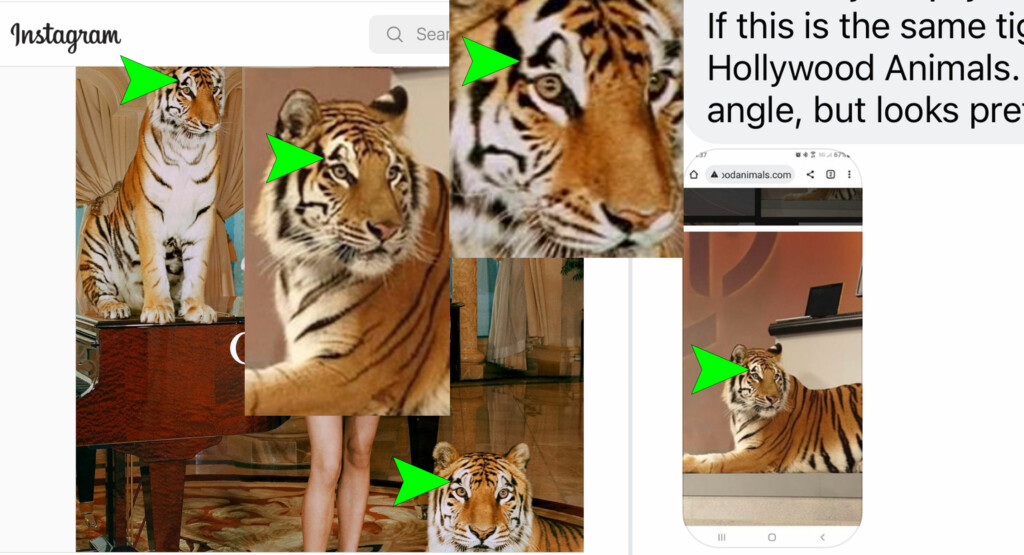
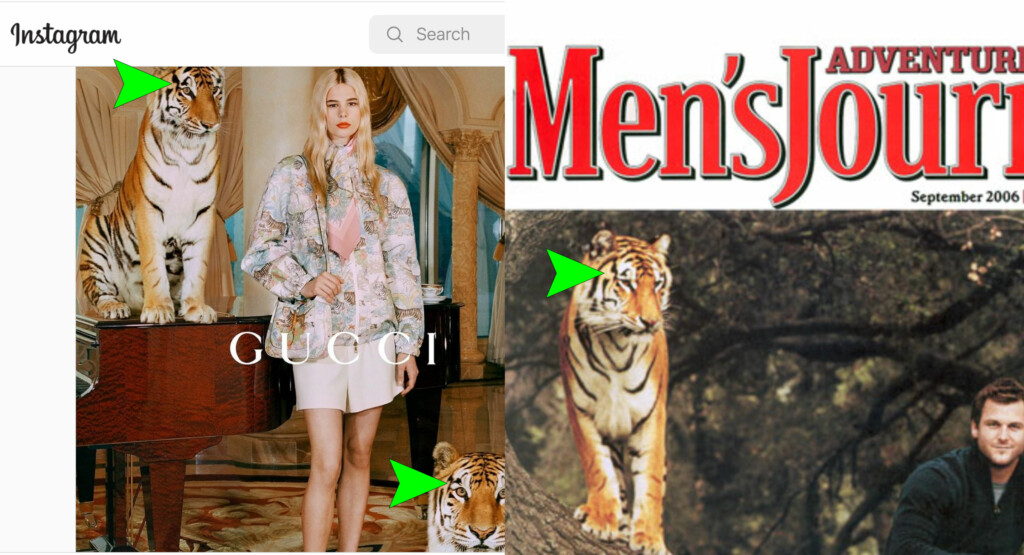
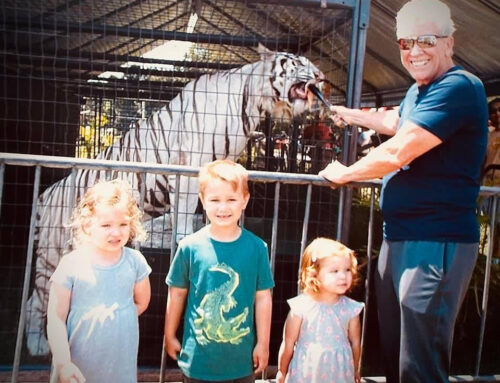
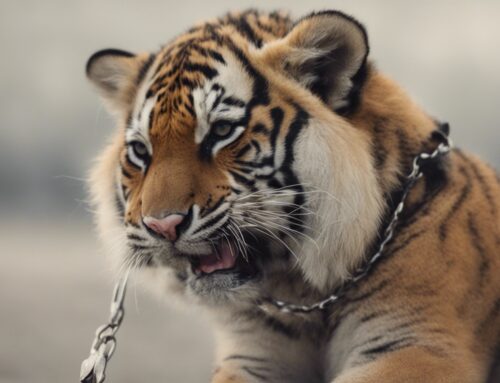

Leave A Comment
You must be logged in to post a comment.